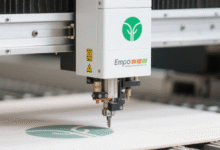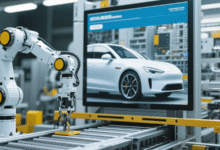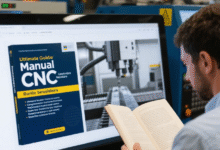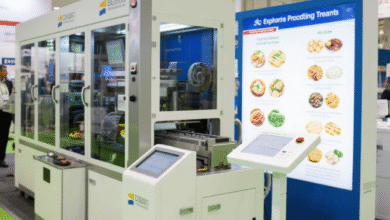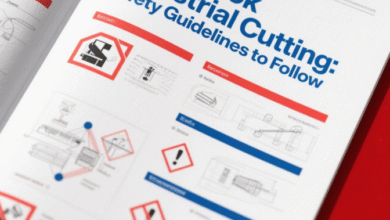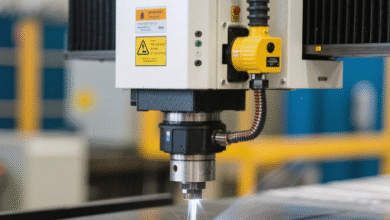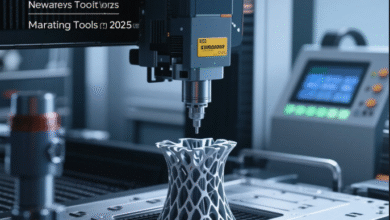CNC Workflow Optimization: Maximizing Efficiency and Productivity
Advertisement
Introduction: Understanding the Basics of CNC Workflow Optimization
Computer Numerical Control (CNC) machines have revolutionized the manufacturing industry by offering precision, efficiency, and automation. In the context of CNC workflow optimization, the focus is on streamlining and improving the processes involved in designing, programming, and producing parts using CNC machines. By implementing best practices and utilizing advanced tools and technologies, manufacturers can enhance their productivity, reduce costs, and deliver higher quality products in less time.
CNC workflow optimization encompasses a range of strategies and techniques aimed at maximizing the efficiency of the entire production process, from initial design to final machining. This involves evaluating each step in the workflow, identifying bottlenecks, and implementing solutions to eliminate waste and streamline operations. By optimizing the CNC workflow, manufacturers can achieve significant improvements in productivity, accuracy, and profitability.
This article will explore the key elements of CNC workflow optimization, including its strengths and weaknesses, best practices, and tools. By understanding the fundamentals of CNC workflow optimization, manufacturers can make informed decisions and take their production capabilities to the next level.
Strengths of CNC Workflow Optimization
1. Enhanced Efficiency: One of the primary advantages of optimizing the CNC workflow is the significant improvement in efficiency. By eliminating inefficiencies, such as manual data entry errors or machine downtime, manufacturers can produce more parts in less time, leading to increased productivity.
2. Improved Quality: Another key benefit of CNC workflow optimization is the enhancement of product quality. By standardizing processes, reducing human error, and ensuring consistent machine settings, manufacturers can achieve higher levels of accuracy and precision in their finished parts.
3. Cost Reduction: Optimizing the CNC workflow can also result in cost savings for manufacturers. By reducing waste, minimizing scrap, and maximizing machine utilization, companies can lower production costs and improve their overall profitability.
4. Faster Time-to-Market: With an optimized CNC workflow, manufacturers can bring new products to market more quickly. By reducing lead times, streamlining production processes, and increasing efficiency, companies can respond to customer demands and market trends faster than ever before.
5. Increased Flexibility: CNC workflow optimization can also enhance the flexibility of manufacturing operations. By standardizing workflows, implementing flexible scheduling systems, and utilizing advanced CAD/CAM software, manufacturers can adapt to changing customer requirements and production volumes with ease.
6. Scalability: Another strength of CNC workflow optimization is its scalability. Whether a manufacturer is producing small batches or large volumes of parts, an optimized workflow can accommodate varying production demands and ensure consistent quality and efficiency.
7. Competitive Advantage: By implementing CNC workflow optimization, manufacturers can gain a competitive edge in the market. Companies that can deliver high-quality products faster and more cost-effectively than their competitors are more likely to attract and retain customers, drive growth, and stay ahead of industry trends.
Weaknesses of CNC Workflow Optimization
1. Initial Investment: One of the potential drawbacks of CNC workflow optimization is the initial investment required to implement new technologies and processes. While the long-term benefits of optimization are clear, some manufacturers may be hesitant to commit resources upfront.
2. Training and Skill Development: Another challenge of CNC workflow optimization is the need for training and skill development among employees. As new tools and technologies are introduced, workers must be trained to use them effectively, which can take time and resources.
3. Change Management: Implementing changes to the CNC workflow can also be met with resistance from employees who are accustomed to existing processes. Change management efforts are necessary to ensure that all stakeholders are on board with the optimization initiatives and understand the benefits of the changes.
4. Integration Challenges: Integrating new software, hardware, and processes into the existing CNC workflow can present technical challenges and compatibility issues. Manufacturers must carefully plan and execute the integration process to avoid disruptions to production and quality.
5. Maintenance and Support: Maintaining and supporting the optimized CNC workflow requires ongoing investment in resources and infrastructure. Manufacturers must have in-house expertise or access to external support to address technical issues, update software, and troubleshoot problems as they arise.
6. Data Security and Compliance: With the increased digitization of the CNC workflow, data security and compliance become critical considerations. Manufacturers must implement robust cybersecurity measures to protect sensitive information and ensure compliance with industry regulations and standards.
7. Performance Optimization: While CNC workflow optimization can deliver significant improvements in efficiency and quality, achieving optimal performance requires continuous monitoring and optimization. Manufacturers must regularly review and refine their processes to stay competitive and meet evolving customer demands.
CNC Workflow Optimization Information Table
| Key Aspect | Description |
|---|---|
| Efficiency | Improving productivity and reducing waste. |
| Quality | Enhancing accuracy and precision in parts. |
| Cost Reduction | Lowering production costs and increasing profitability. |
| Time-to-Market | Accelerating product development and launch. |
| Flexibility | Adapting to changing production demands. |
| Scalability | Accommodating varying production volumes. |
| Competitive Advantage | Gaining a market edge through optimization. |
Frequently Asked Questions (FAQs)
1. What is CNC workflow optimization?
CNC workflow optimization refers to the process of improving efficiency and productivity in the design, programming, and production of parts using CNC machines.
2. How can CNC workflow optimization benefit manufacturers?
Optimizing the CNC workflow can lead to enhanced efficiency, improved quality, cost reduction, faster time-to-market, increased flexibility, scalability, and a competitive advantage.
3. What are the potential challenges of CNC workflow optimization?
Challenges of CNC workflow optimization include initial investment, training and skill development, change management, integration challenges, maintenance and support, data security and compliance, and performance optimization.
4. What tools and technologies are used in CNC workflow optimization?
Tools and technologies such as CAD/CAM software, CNC machines, automation systems, and data analytics are commonly used to optimize the CNC workflow.
5. How can manufacturers implement CNC workflow optimization?
To implement CNC workflow optimization, manufacturers can conduct a workflow analysis, identify bottlenecks, implement best practices, utilize advanced tools, and continuously monitor and optimize their processes.
6. What are the key benefits of CNC workflow optimization?
The key benefits of CNC workflow optimization include enhanced efficiency, improved quality, cost reduction, faster time-to-market, increased flexibility, scalability, and a competitive advantage in the market.
7. How can manufacturers measure the success of CNC workflow optimization?
Manufacturers can measure the success of CNC workflow optimization by tracking key performance indicators (KPIs) such as production output, quality standards, lead times, and overall profitability.
Conclusion: Taking Your CNC Workflow to the Next Level
In conclusion, CNC workflow optimization is a powerful strategy for maximizing efficiency and productivity in manufacturing operations. By identifying and addressing inefficiencies, implementing best practices, and utilizing advanced tools, manufacturers can achieve significant improvements in quality, speed, and cost-effectiveness. To stay competitive in today’s fast-paced market, it’s essential for companies to embrace CNC workflow optimization and continuously strive for operational excellence.
Are you ready to optimize your CNC workflow and unlock your full production potential? Take the first step towards improvement by conducting a thorough analysis of your current processes, identifying areas for enhancement, and implementing tailored solutions to streamline your operations. By investing in CNC workflow optimization, you can position your company for success and future growth in the ever-evolving manufacturing industry.
Remember, the key to success lies in continuous improvement and adaptation to new technologies and industry trends. Stay ahead of the curve with CNC workflow optimization and propel your business towards new heights of success and competitiveness.
Take action today and revolutionize your manufacturing processes with CNC workflow optimization. The future of your business depends on the steps you take today to optimize your operations and drive sustainable growth and profitability. Embrace the power of CNC workflow optimization and transform your manufacturing capabilities for the better.
Thank you for taking the time to explore the world of CNC workflow optimization with us. We wish you every success in your journey towards operational excellence and unparalleled productivity in the manufacturing industry.
Disclaimer
The information provided in this article is for educational and informational purposes only. It is not intended as professional advice or a recommendation for specific actions. Readers are advised to consult with industry experts and professionals before implementing any changes to their CNC workflow. The author and publisher of this article do not assume any liability for the consequences of actions taken based on the information provided.


